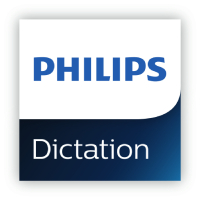 By Legal Futures Associate Philips Dictation
By Legal Futures Associate Philips Dictation
What are the key features of electronic signatures, how they are different to digital signatures and why they are gaining in popularity in a wide range of business sectors?
Electronic signatures – an introduction
In the past few years, remote working, online meetings and video conferencing have become commonplace as hybrid working grows ever more popular. However, for employees to be able to work seamlessly between the workplace and home there needs to be ease of connectivity between people in the office and those working remotely.
According to a new benchmarking study (Hybrid Working & Law Firms’ Long-Term Cloud Journey) undertaken by Legal IT Insider in association with Philips, one of the most significant increases in the use of technology to support hybrid working in the legal sector has been the surge in adoption of e-signature usage (72%). This popularity is also reflected in other industry sectors – so why is this the case?
What is an e-signature?
An electronic signature (e-signature) is a type of signing that is done electronically, replacing the traditional “wet ink” signature.
An e-signature can be used on online versions of legal documents, contractual agreements, invoices, financial documentation and more. It can take the form of a digital version of an individual’s signature, a visual mark, or alternatively can be captured through a checkbox.
These signatures demonstrate a party’s willingness to agree to certain contract terms, and consequently are legally binding. It’s therefore important that e-signatures should meet certain legally binding criteria, including:
- Clear intent to sign:The signer must show their intention to sign an agreement electronically (just as they would with a handwritten signature).
- Consent to do business electronically:The signer must agree to conduct business electronically, for example by “clicking to accept” a standard consent clause.
- Association of signature with the record:For an electronic signature to be valid, the system that is used must keep a record that reflects the process by which the signature was created.
- Record retention:Electronic signature records should accurately reflect the agreement and be capable of retention.
The difference between e-signatures and digital signatures
Although some people use the terms digital signature and e-signature interchangeably, they are fundamentally different and perform different functions.
As described above, an e-signature is a method for entering into a legal agreement in a digital environment. Essentially it demonstrates the intent of the signatory to be legally bound by the terms within a specific document.
A digital signature, on the other hand, is often referred to as “sealing a document” and is not a signature in the legal sense. Instead, it is a way of verifying that a digital document hasn’t been tampered with, altered or forged during the sending and receiving process. Digital signatures can be used to prove to the receiver that the document was signed by the person who claimed to sign it.
Benefits of e-signatures
- Streamlined processes:Gathering hand-written signatures for legally binding documents and agreements can be a complex process. E-signatures can streamline things in terms of eliminating the preparing, printing and mailing of paper documents, whilst also reducing the need to meet in person which is so important in today’s hybrid work environment.
- Less waste:E-signatures can assist in reducing the amount of paper required, along with savings on postage, ink, packaging and the associated delivery costs.
- Increased flexibility:Signing electronically allows colleagues or business partners to complete paperwork anywhere and anytime, making it easier to conduct business from a remote location or on the go.
- Improved efficiency:E-signature software typically has a dashboard tool that allows for the easy tracking of those documents that are awaiting a signature, thereby speeding up processes that may have previously taken weeks.
- Reduced errors and risks:Authentication methods can reduce risks and enable forms to be pre-filled, which in turn avoids human error. In addition, e-signatures provide an audit trail including time stamping the exact time and date of the signature, which is helpful in ensuring compliance.
Summary
Businesses in a variety of sectors ranging from legal and financial through to healthcare and government are using e-signature solutions, including small, medium and enterprise-level organisations. As remote and hybrid working expands, they are finding e-signature solutions essential to their business, particularly in terms of how they can seamlessly integrate with workflow software in order to streamline the processes associated with editing, signing, sending and tracking documents, all from the convenience of a mobile device.










